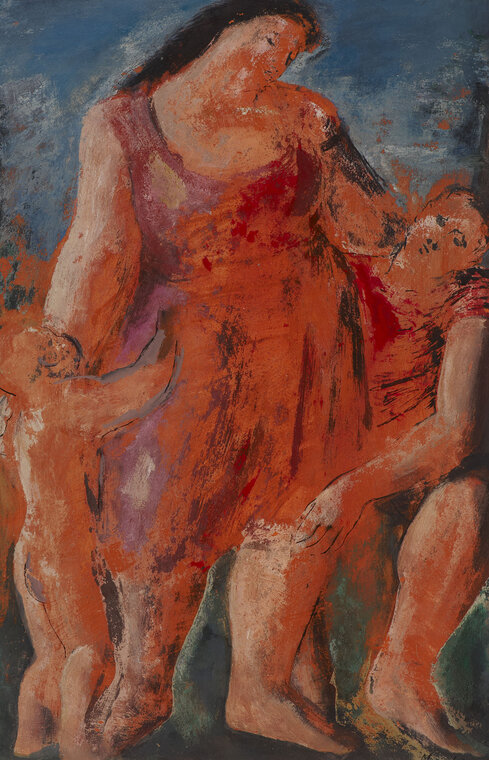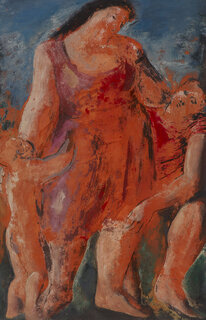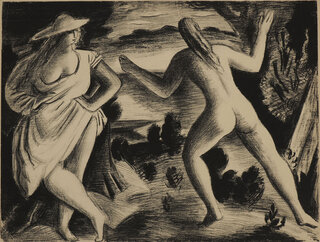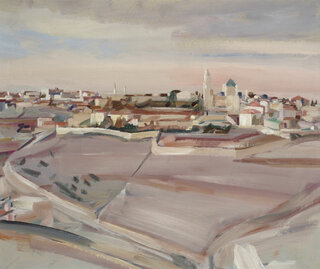
© The estate of Bernard Meninsky
Meninsky's 'Family Group' is painted in the monumental 'Miltonic style' that he began to employ in the 1930s , in which the artist employed an idealised, generalised, pastoral setting peopled by monumental figures (a style also employed by his former Slade School contemporary Mark Gertler in the same period), the best-known of which are his illustrations to Milton's poems 'L'Allegro' and 'Il Penseroso' (published 1946). After the outbreak of the Second World War caused the closure of the London Art Schools, Meninsky (who had taught at the Westminster School of Art), found a position at the Oxford City School of Art and moved to Oxford to take up his role. Many paintings, drawings and lithographs in the Miltonic style resulted from this period, influenced by Picasso but also Samuel Palmer, who inspired a new generation of 'neo-romantics' in the 1940s. Meninsky had been drawn to the mother and child image since the birth of his two sons, David, in 1918, and Philip, in 1919, and his first solo exhibition in 1919 at the Goupil Gallery, London, was entitled 'Mother and Child Drawings'.




